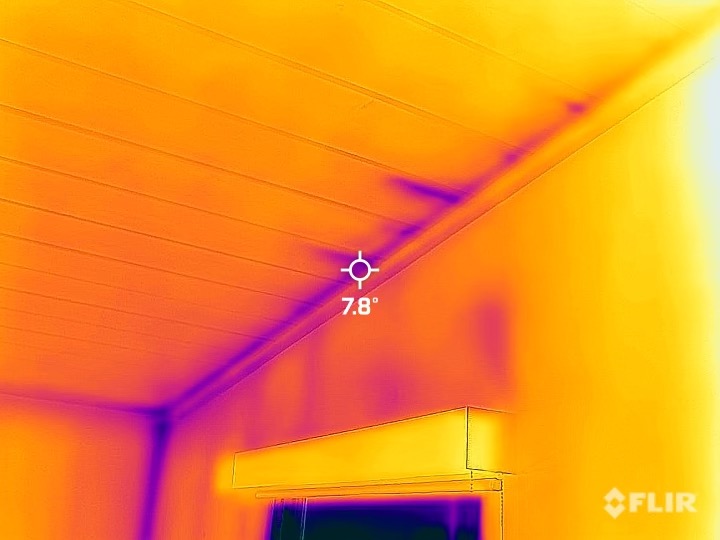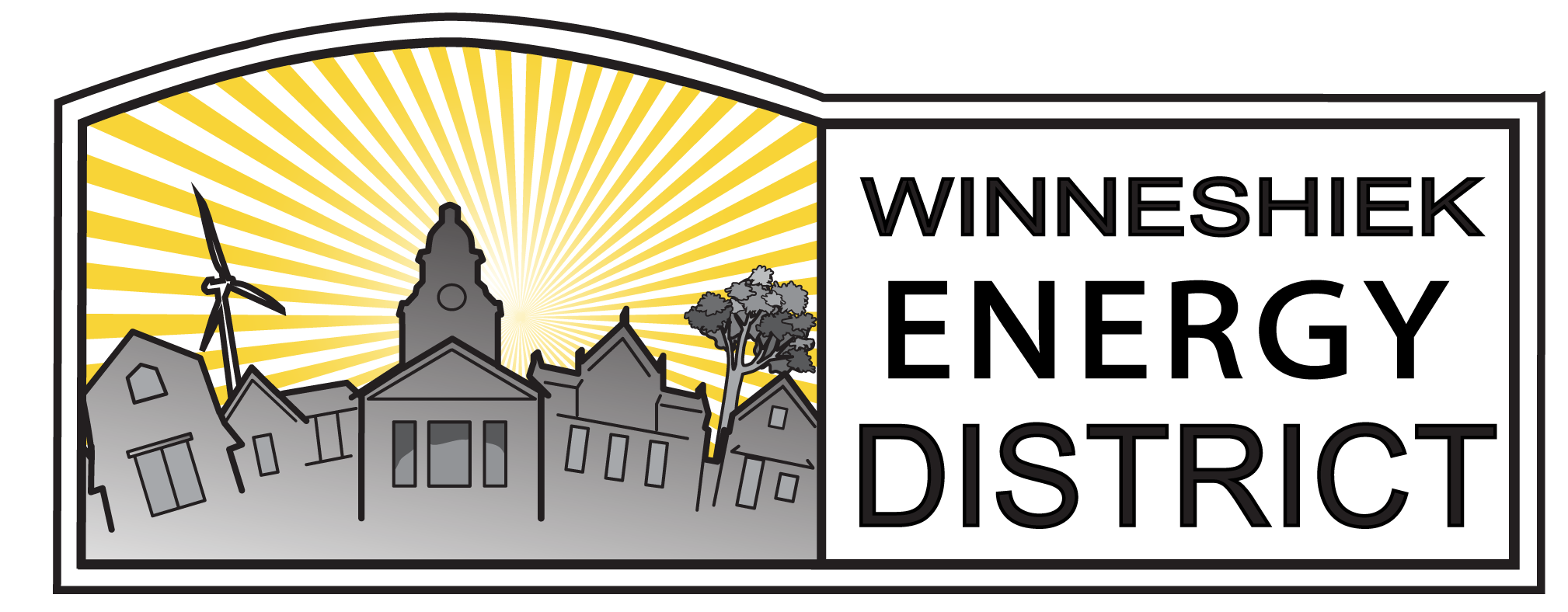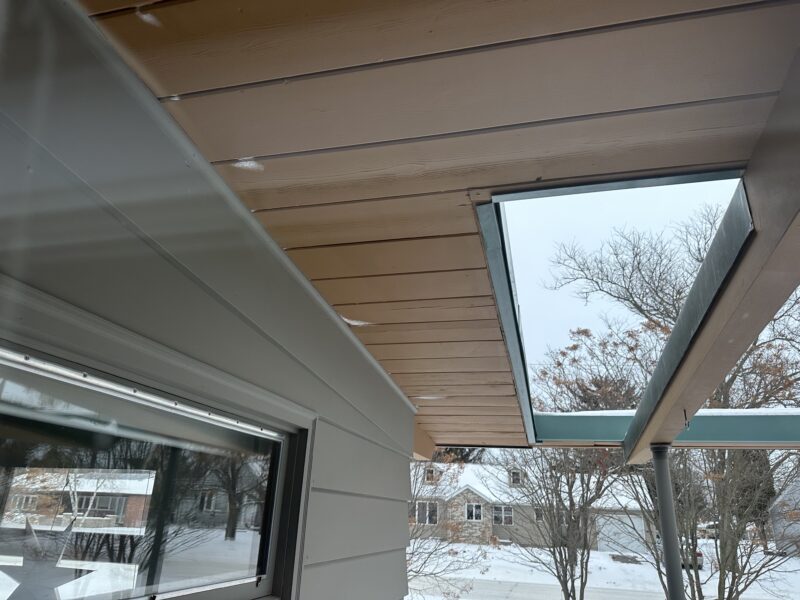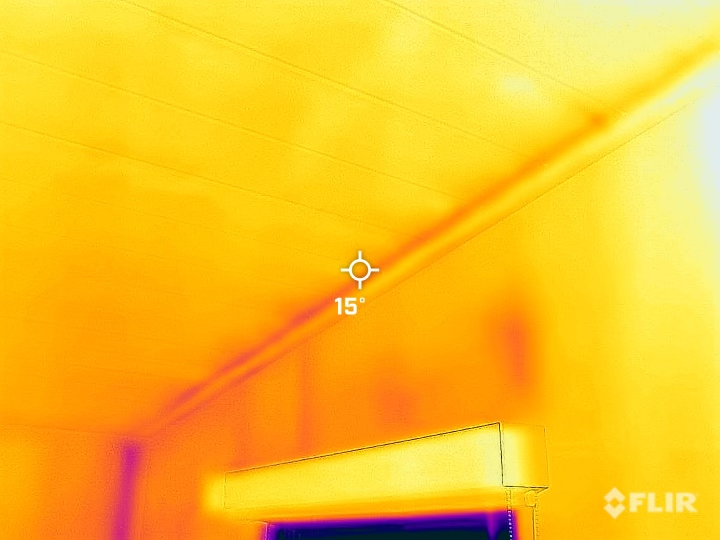Using the Blower Door and Thermal Imaging Camera to Locate Air Leaks
by Paul Cutting, Energy Planner
A few weeks back a Decorah homeowner asked me to help locate air leaks in their flat roofed, mid-century home. We picked a cold day, where the temperature difference between the interior and exterior were great, and used the blower door to suck air out of the house and an infrared camera to find breaks in the building envelope.
This particular house was built with beveled edge tongue and groove boards that serve as both the finished interior ceilings and the roof decking. At some point 2” of rigid insulation was added on top of the tongue and groove decking, but overall, the roof is minimally insulated.
The areas where the finished ceilings meet the exterior walls are especially problematic. Below are three photos before and afterward. The first was taken inside with the blower door running. Notice the dark blue streaks originating from the beveled areas of the tongue and groove ceilings. The blower door sucks air out of the house, and as incoming cold air is sucked in, it cools adjacent surfaces, resulting in the streaks. The second photo was taken just the other morning when lows got down to about -8°f. Hot interior air is pushed outward through the bevels in the tongue and groove decking, causing water vapor to freeze on the boards. The third photo was taken at the location of the first photo, after the homeowner caulked the bevels. The dark blue streaks are gone.
Using a blower door with an infrared camera is an incredibly easy way to locate air leaks. If you’re interested in Winneshiek Energy District performing the same service at your house, reach out to us today! 
Photo 1: Blower door connected. As cold air is pushed inward, cold air cools adjacent surfaces.
Photo 2: Interior hot air escapes to the exterior through beveled tongue and groove decking.
Photo 3: After interior caulking.


